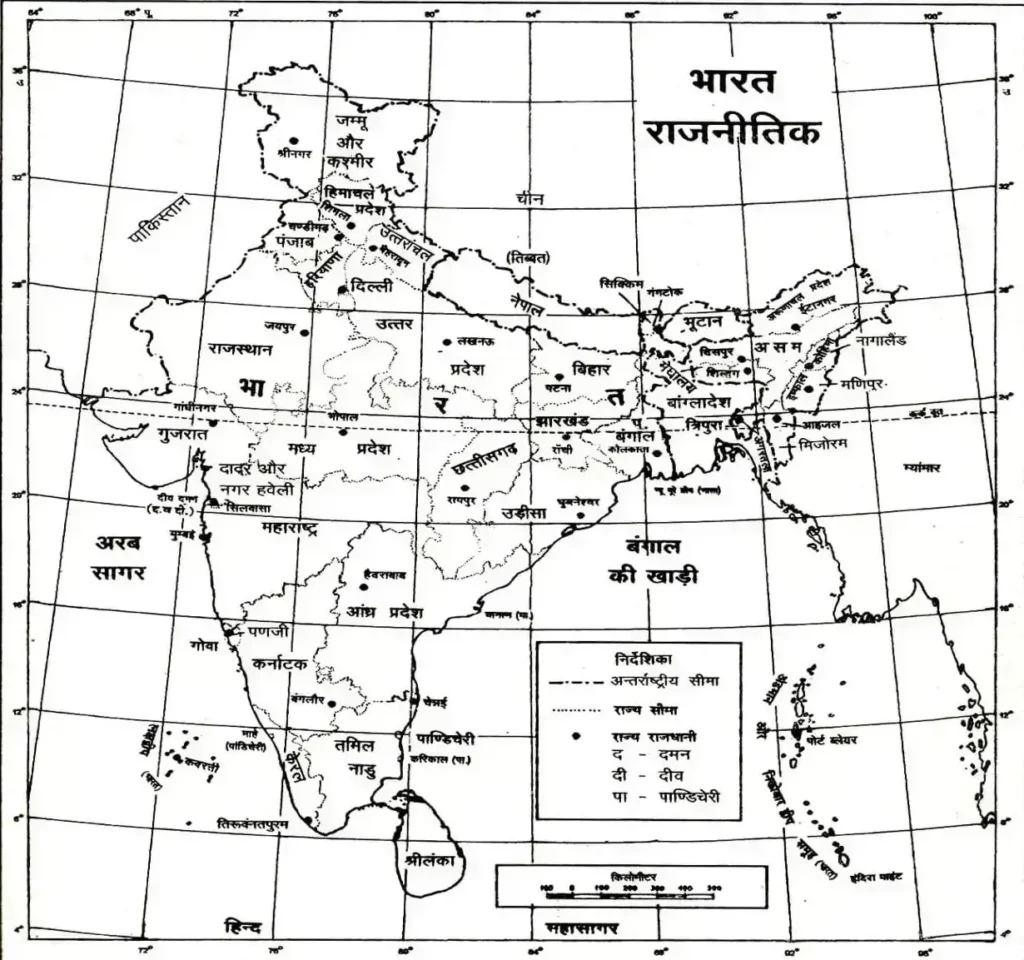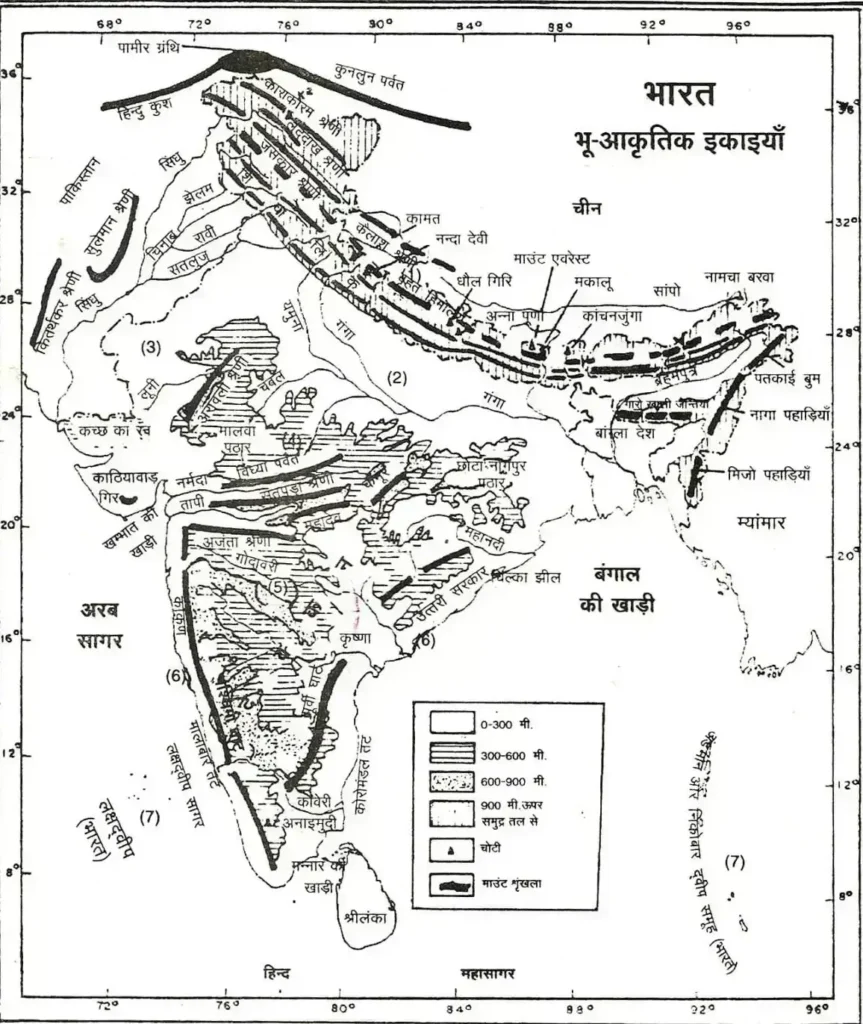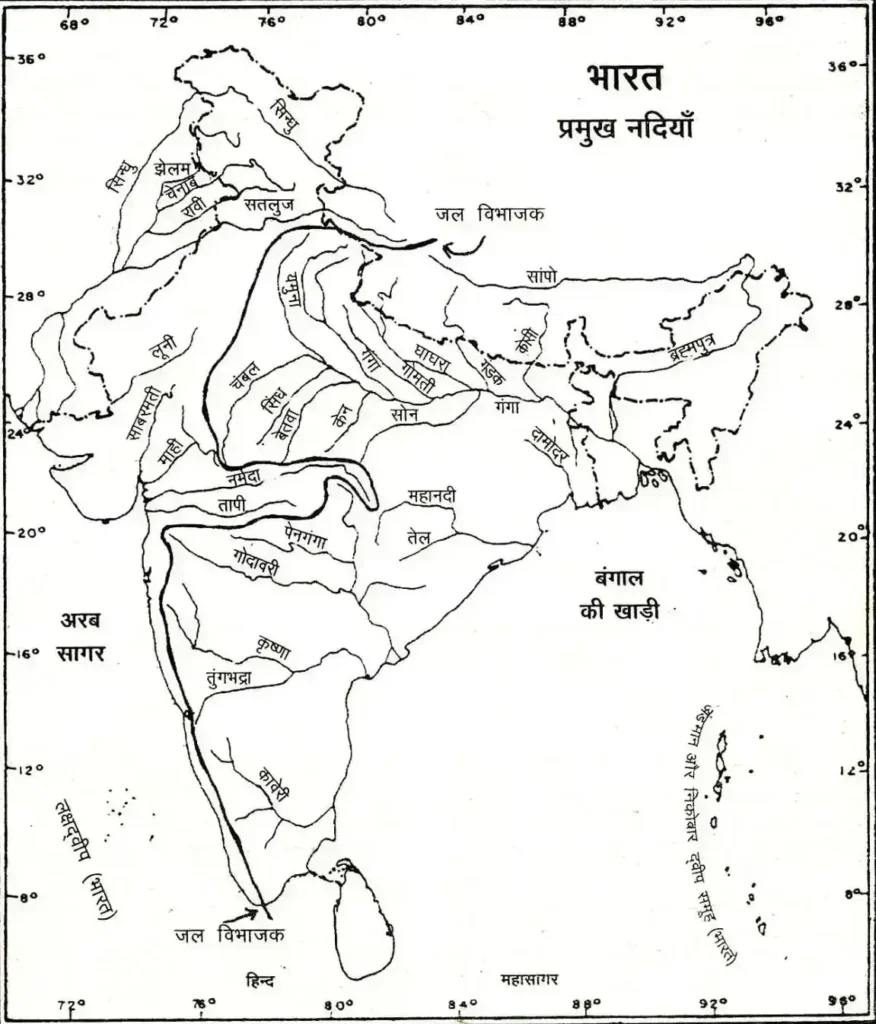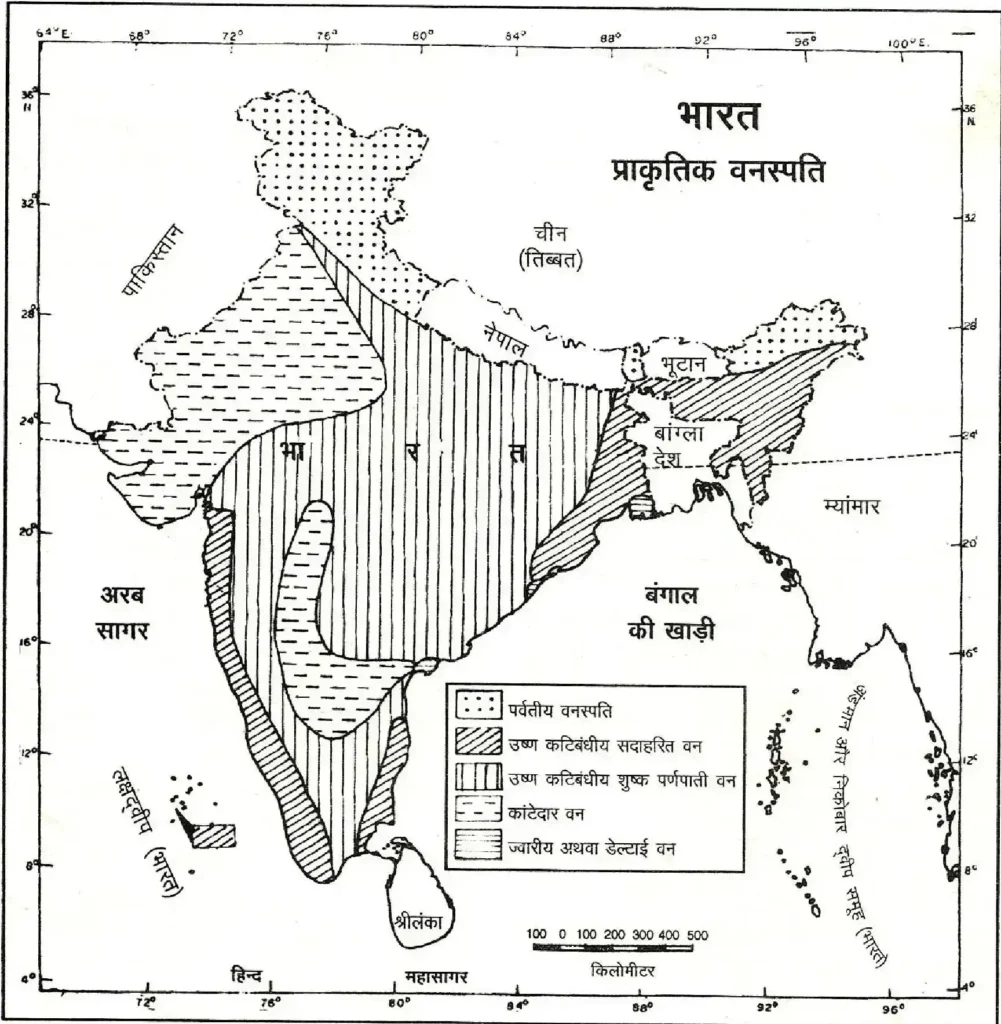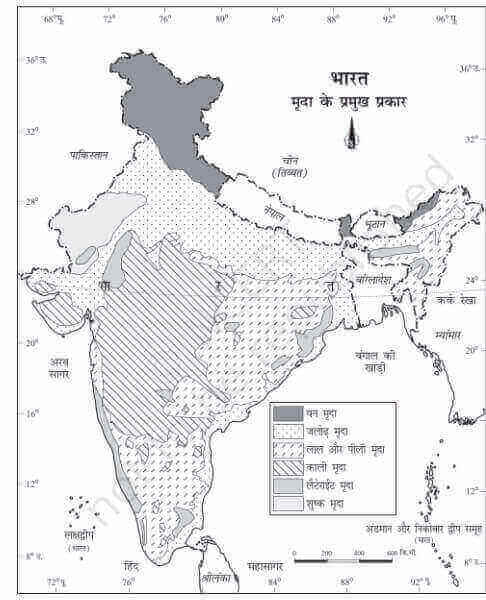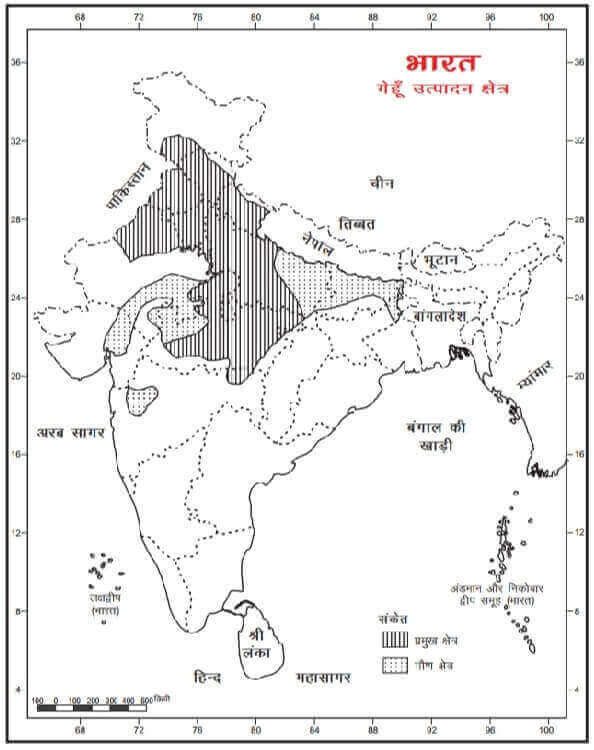The Climate Of India
The Climate Of India – Many Scholars Have Tried To Divide The Climate Of India Into Regions. The Climate Regionalization Of Trevartha Is Quite Prevalent In These Efforts. On The Basis Of This Classification, India Can Be Divided Into The Following Climatic Regions.
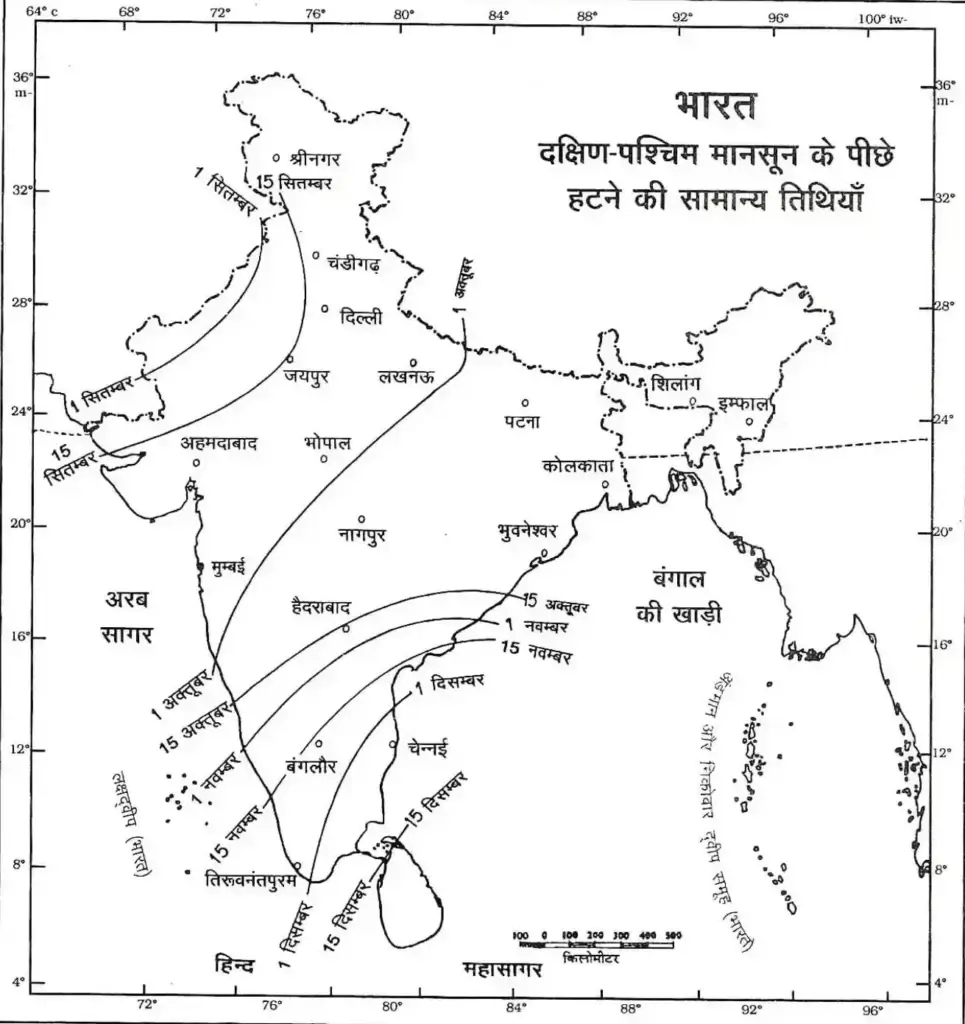
India’s Climate State
Tropical Rainforest Climate
The North-Eastern Part Of The Country And The Western Coastal Plains Come Under This Region. The Annual Rainfall In These Areas Is 200 Cm. (800 Cm In Some Areas) And The Temperature Is 18.2 ° C Throughout The Year. Lasts More Than The Temperature In Some Parts Of This Hot Climate Region Is 29 ° C Throughout The Year. Are Found Up To For The Most Rainfall In The Country Mawsynram , Which Cherapunji In Meghalaya Near, Is Located In The Same State. The High Humidity In These Areas Is Favorable For The Growth Of Vegetation. These Areas Have Natural Dense Rain Forests And These Forests Are Evergreen.
Tropical Savanna Climate
This Type Of Climate Is Found In Almost The Entire Peninsular Plateau Except The Area Of Semi-Arid Climate Which Comes Under The Rain Shadow Of Sahyadri. The Average Monthly Temperature In This Region Too Is 18.2°C. Lasts More Than The Annual Temperature Difference Is Higher Than In Tropical Rain Forest Areas.
Not Only Is The Amount Of Rainfall Less, But The Rainy Season Is Also Relatively Short. The Average Annual Amount Of Rainfall In The West Is 76 Cm. 152 Cm From East. Takes Place In Between. The Vegetation Of These Areas Varies According To The Amount Of Rainfall. Deciduous Forests Are Found In Relatively Moist Areas And Vegetation In Relatively Dry Areas Is A Combination Of Thorny Shrubs And Deciduous Trees.
Tropical Semi – Arid Steppe Climate
This Climate Is Found In A Broad Rain Shadow Belt From Central Maharashtra To Tamil Nadu. The Main Feature Of This Climate Is Low And Erratic Rainfall. The Average Annual Rainfall Is 38.1 Cm. From 72.2 Cm. And The Temperature Is 20°C In December. To 28.8°C. Average Monthly Temperature In Summer Is 32.8°C. Goes Till
Due To Limited Amount Of Rainfall And Extreme Irregularity, These Areas Remain Drought Prone, Which Harms Agriculture In This Region. From The Point Of View Of Climate, This Area Is Suitable For Animal Husbandry And Dry Agriculture Only. Prickly Trees And Shrubs Are Found In Abundance In The Vegetation Growing In This Area.
Warm And Subtropical Steppe Climate
This Type Of Climate Is Found In A Wide Area Extending From Punjab To Thar, Situated Between The Thar Desert And The More Humid Areas Of The Gangetic Plain. To The South And South-East Of This Region Lie Relatively Moist Areas Of The Peninsular Pahar. The Climate Of This Region Is Of A Transition Type Between The Northern And The Thar Desert. Rainfall Is 30.5 And 63.5 Cm. And The Temperature Is 12°C. From 35°C. Resides In Between.
In Summer The Temperature Is High And At Times 45°C. Reaches Till There. The Amount Of Rainfall Is Not Only Limited But It Is Also Highly Erratic. This Area Is Suitable Only For Dry Agriculture And Animal Husbandry. Agriculture Is Possible Only With The Help Of Irrigation.
Tropical Desert Climate
This Type Of Climate Is Found In The Western Part Of Rajasthan And Some Parts Of Rann Of Kutch. These Areas Receive Very Little Rainfall And Sometimes There Is No Rainfall For Many Years. The Average Amount Of Rainfall Is 30.5 Cm. Less Than 12 Cm In Many Parts. Less Than . It Is Hot In These Areas. The Temperature In Winter Is Relatively Low And The Average Temperature In January In The Northern Parts Of This Region Is 11.60 C. The Vegetation Cover In This Arid Climate Area Is Very Less. Only Thorny Plants And Some Grasses Grow In This Area.
Humid Subtropical Climate With A Humid Winter
This Type Of Climate Is Found Over A Wide Area From The Himalayas To The South. To The South Of This Climatic Region Are Tropical Savanna Regions And To Its West Are Tropical And Sub-Tropical Steppe Regions.
This Wet Winter Climate Zone Extends From Punjab To Assam Along With The Himalayas And The Region Of Rajasthan Before The Aravalli Is Also Included Under This Climatic Region. The Average Rainfall In This Region Is 63.5 Cm. To 125.4 Cm. Till Then. In Its Northern Part, The Rainfall Is More In The Region Adjoining The Himalayas And Decreases From East To West Towards The South. Most Of The Rainfall Occurs In Summers And In Some Areas, Due To The Influence Of Western Disturbances, It Rains Even In Winters.
Mountain Climate
The Major Region Of This Type Of Climate Is The Himalayan Region. In Mountainous Areas, There Is A Lot Of Heterogeneity In Temperature In Front Of The Sun And On The Slopes Away From It. The Amount Of Rainfall In The Himalayan Region Generally Decreases From East To West. There Is Also A Significant Difference In Precipitation Between The Facing And Opposite Slopes Of The Winds.
Generally, On The Southern Slopes Of The Himalayas, Which Are The Slopes Facing The South-West Monsoon Winds, The Amount Of Rainfall Is Higher Than On The Northern Slopes. This Is The Reason That The Cover Of Vegetation On The South-Facing Slopes Of The Himalayas Is Also Generally Found To Be More Dense.
| Season | Months According To Indian Calendar | Months According To The English Calendar |
|---|---|---|
| Spring | Chaitra-Baisakh | March April |
| Summer | Eldest-Ashadha | May June |
| Rain | Shravan-Bhadra | July August |
| Autumn | Ashwin-Karthik | September October |
| Hemant | Margashish-Poush | November-December |
| Shishir | Magh-Falgun | January-February |
Winter Season
- The Winter Season In India Occurs In The Months Of December, January And February. During Winter The Temperature Is Generally 21°C.
- In Winter, The Air Pressure Remains High In Northern India And The North-East Trade Winds Blow From The Land To The Sea.
- Due To Which The Winter Season Remains Dry. In Winter, There Is Rainfall Due To Western Disturbances. This Is Due To Weak Cyclonic Pressures. The Western Disturbance Originates In The Eastern Mediterranean Sea, Which Moves Eastwards Crossing Western Asia, Iran, Afghanistan And Pakistan And Reaches India And On Its Way Through The Caspian Sea And The Persian Gulf, It Rains In Northern India. .
- There Will Be Rain In Tamil Nadu In Winter.
- The Trade Winds That Come In The Winter Season Are Called North-East Monsoons. Rabi Crops In North India Get Special Benefit From These Trade Winds. At This Time, Along With Heavy Snowfall In The Western Himalayan Region, Chennai Also Receives Heavy Rainfall.
Summer Season
- The Summer Season Occurs In India Between March-June. In The Month Of March, Due To The Movement Of The Sun Towards The Tropic Of Cancer, The Temperature Starts Increasing In India. Due To The Rise In Temperature, The Temperature In The South Reaches 43°C In March. In Northern India, This Condition Comes In Mid-May.
- As The Temperature Increases, The Air Pressure Also Decreases. At This Time, The Center Of Low Air Pressure Is Formed In The Plateau Areas Of Rajasthan And Nagpur. Due To The Change In The Direction And Path Of The Wind Between March-May, A Westerly Wind Blows Which Is Called Loo. It Is Very Hot And Dry. The Combination Of Wet And Dry Winds Causes Storms And Rains. Kaal Vaisakhi Rain In West Bengal, Kolkata Is An Example Of This.
- Rainfall In The Month Of May In South India And Assam Is Very Beneficial. In Assam, This Rain Is Beneficial For Tea And It Is Called Tea Rain. Thus In Kerala, Karnataka It Is Called Amravishti. This Rain Is Useful For Jute, Tea, Kahwa, Rice.
Rainy Season ( Monsoon )
- The Rainy Season In India Lasts Between June-September.
- In The Month Of June, The Rays Of The Sun Were Falling Directly On The Tropic Of Cancer. Lives. Due To Which The Wind Heats Up In The Western Plains And Rises Up And A Low Pressure Area Is Formed. The Area Of Low Pressure Is So Strong That The Trade Winds Of The Southern Hemisphere Cross The Equator To Fill The Low Pressure Area And When These Winds Move Towards The Indian Subcontinent, Their Direction Changes Due To The Movement Of The Earth And It Moves South. Starts Flowing In The West Direction. For This Reason, The Rainfall That Occurs Between June And September Is Called The South-West Monsoon. Monsoon Winds Are Variable Unlike Trade Winds.
- The Origin Of The Trade Winds Of The Southern Hemisphere Is In The Sea, When These Winds Enter The Indian Subcontinent, They Get Moisture From The Arabian Sea And The Bay Of Bengal. Monsoon Winds Enter The Indian Seas Towards The End Of May. The South-West Monsoon First Rains Over The Kerala Coast Around June 5 And It Starts Raining All Over India Throughout The Month. Due To The Topography Of The Indian Subcontinent, The Southwest Monsoon Divides Into The Following Two Branches:
- » Arabian Sea Branch – Arabian Sea Branch
- » Bay Of Bengal Branch – Bay Of Bengal Branch
Arabian Sea Branch ( Monsoon )
This Branch Brings Rain To The Western Coasts Of The Country, Western Ghats, Maharashtra, Gujarat And Parts Of Madhya Pradesh. In Punjab It Meets The Monsoon Branch Coming From The Khadtri Of Bengal. This Branch Receives Heavy Rainfall Over The Western Ghats, But Due To Being In The Shadowy Region Of The Western Ghats Of The Deccan, These Areas Receive Scanty Rainfall. Similarly, In Gujarat And Rajasthan, Due To The Absence Of Mountain Barriers, The Rainfall Is Reduced.
The Arabian Sea Branch Is The More Powerful Of The Two Branches Of The Southwest Monsoon And Receives Almost Three Times More Rainfall Than The Bay Of Bengal Branch. There Are Two Reasons For This, First – Only One Part Of The Bay Of Bengal Branch Enters India And The Second Part Turns Towards Myanmar And Thailand.
The Northern Branch Of The Arabian Sea Monsoon Enters Gujarat, The Gulf Of Kutch And Rajasthan. Due To The Absence Of Mountainous Barriers, This Branch Does Not Rain In These Areas And Directly Collides With The North-West Ranges, Causing Heavy Rains In Jammu And Kashmir And Himachal Pradesh. While Returning To The Plains, The Moisture Content Is Less. Therefore, Due To The Returning Winds, There Is Little Rainfall In Rajasthan.
Bay Of Bengal Branch (Monsoon)
The Bay Of Bengal Branch Of Monsoon Moves Northwards Towards Bengal, Bangladesh And Myanmar. A Part Of The Monsoon Winds Moving Towards Myanmar Collides With The Arakam Hills And Comes In West Bengal And Bangladesh Of The Indian Subcontinent.
This Branch, Rising Parallel To The Himalayan Ranges, Rains In The Gangetic Plain. The Himalayan Ranges Prevent The Monsoon Winds From Passing Through And The Entire Ganges Basin Receives Rainfall. The Branch Moving Towards North And North-East Brings Heavy Rainfall In North-East India. In Medhgyalaya And Garo, Khasi And Jaintia Hills Form A Captivating Landscape, Due To Which There Is Excessive Rainfall. Cherrapunji (Currently Masinram), The Place With The Highest Rainfall In The World, Is Located In These Hills.
Winter Season
Autumn Is The Period Of Transition From Hot Rainy Season To Dry And Cold Season. Autumn Begins In Mid-September. This Is The Time When The South-West Monsoon Returns – The Temperature And Humidity Are High During The Returning Monsoon Which Is Called “October Heat” . With The Return Of Monsoon, The Temperature Initially Rises But After That The Temperature Starts Decreasing.
The Reason For The Decrease In Temperature Is That During This Period The Sun’s Rays Move From The Tropic Of Cancer To The Equator And Fall Directly On The Equator In September. As Well As Answer
The Low Pressure Area In The Plains Of India Is Not Strong Enough To Attract Monsoon Winds.
By Mid-September, Monsoon Winds Bring Rain Up To Punjab. By Mid-October, Monsoon Winds Are Able To Bring Rain Over Central India And Up To South India In The Early Weeks Of November And Thus The Monsoon Leaves The Indian Subcontinent By The End Of November. This Departure Is Phased, Hence It Is Called “Returning Southwest Monsoon” .
In Autumn, Cyclones Arise From The Bay Of Bengal Which Cause Severe Destruction In India And Bangladesh. Cyclones Cause Heavy Rainfall On The Eastern Coasts.
Note :-
Pre-Monsoon Showers Are Received In The Summer Season. About 10 Percent Of India’s Average Annual Rainfall Occurs. , This Rain Has Different Local Names In Different Parts.
(I) Mango Showers: By The End Of Summer, Pre-Monsoon Showers Occur, Which Is A Common Practice In Kerala. Locally, This Stormy Rain Is Called Mango Rain, Because It Helps In Early Ripening Of Mangoes, In Karnataka It Is Called Coffee Shower And Cherry Blossom.
(Ii) Flower Showers: Due To This Rain, The Flowers Of Kahava Start Blooming In Kerala And Adjoining Kahava Growing Areas.
(Iii) Kaal Baisakhi: These Are Fierce And Destructive Rain-Bearing Winds That Blow In The Evening In The Month Of Baisakh In Assam And West Bengal. Their Infamous Nature Can Be Gauged From Their Local Name Kaal Baisakhi. Which Means- The Devastation Coming In The Month Of Baisakh. These Winds Are Good For Tea, Jute And Rice. In Assam, These Storms Are Called ‘Bardoli Chheda’ Or ‘Tea Showers’.
(Iv) Loo : These Are Dry, Hot And Painful Winds Blowing From Punjab To Bihar In The Northern Plain. Their Intensity Is High Between Delhi And Patna.

